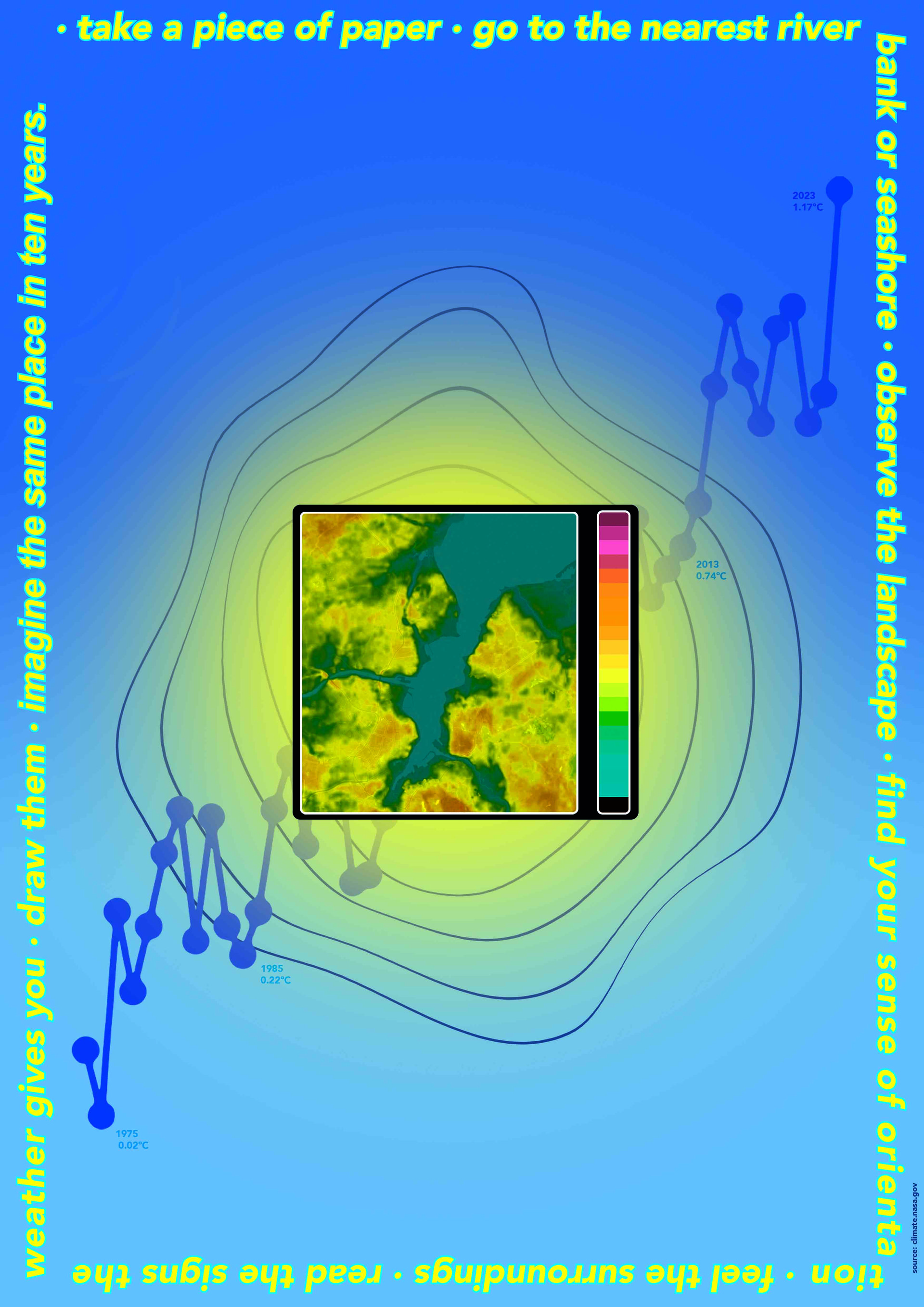Juan Blanco
Juan Blanco (1988) lives and works in Germany. His favourite fields are graphic design, painting and installations. Since 2018, he has been collaborating with the MCWW collective, which seeks new strategies for institutional critique and reflects on the structures that circulate on the internet. In this image, Juan Blanco invites those carrying out his instruction to project themselves into the future by imagining the impact of climate change on spaces near rivers.
Fun Fact
Our gardens need to be increasingly rich in biodiversity to cope with extreme temperatures, so here are 5 types of plants that are highly resistant to drought and heavy rain that soaks the soil.
Annual: Night beauty (Mirabilis japala). In the ground or in a pot on the balcony, this plant forms a small bush whose flowers are present throughout the summer and open in the evening to release a pleasant fragrance.
Perennial: Oregano (Origanum vulgare). This aromatic plant thrives in dry soil and full sun and is a favourite with bees, who are constantly foraging for its small pink or white flowers.
Grass: Sesleria caerulea. In gardens, this grass, which is not afraid of the sun or lack of water, forms compact clumps and lends itself to pretty plant combinations without becoming invasive.
Fern: Polypodium vulgare. Covering the ground at the foot of trees or hedges or growing along walls, it has the particularity of resting during the summer drought. When the humidity returns, the plant forms a new luxuriant vegetation.
Climbing plant: Blue Passiflora (Passiflora caerulea). Global warming has enabled this plant to flourish in gardens. Its flowers open mid-morning and close late afternoon, and its fruit is edible.
Call to Action
Our environment is currently being modified mainly by human activities. The expansion of urbanisation and the exploitation of natural resources often require the draining of marshy areas, the correction or channelling of watercourses, and the construction of dams. The disappearance of these environments leads to a huge loss of biodiversity and weakens our ecosystem. The solution to limiting our impact is to protect these important environments by becoming aware of the development projects underway in our regions and to take a stand against projects that threaten the survival of these environments.
Riddle
If all the ice in the poles and glaciers around the world melted, how many metres would sea level rise?
A) 4m, the depth of an Olympic swimming pool
B) 20m
C) 60m
D) 200m, you can't see much!
Instruction
